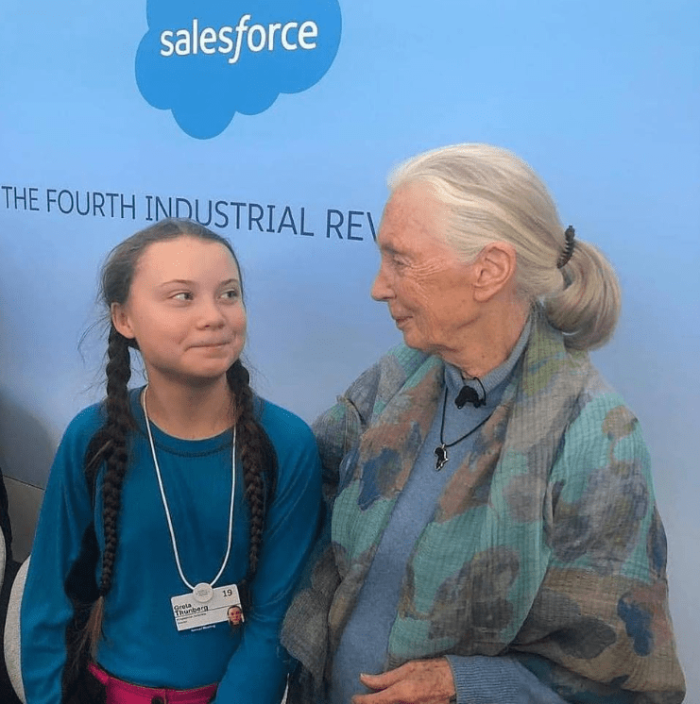Mar 11
20210
Ford Foundation, Neo-Liberalism and the Defanging of Feminism, Rockefeller Brothers Fund
Fourth Industrial Revolution Global Green New Deal Great Reset Naomi Klein The Schmidt Family Foundation World Economic Forum
Naomi Klein, Conspiracy Theorist
March 9, 2021
By Lorenzo Raymond
Author Naomi Klein, and Klaus Shwab, founder of the World Economic Forum, endorse “The Future We Choose”, authored by . [Source: Amazon]
When it comes to the “Great Reset,” Naomi Klein is offended. Her intelligence is insulted. Her legacy is tarnished. And she is here to correct the record.As the sun set on 2020, Professor Klein stood up as the only adult in the room among those who research the machinations of multi-national corporations. The celebrated author excoriated all those sounding an alarm about The Great Reset program advanced by the World Economic Forum, the hypercapitalist organization notorious for its annual meetings in Davos, Switzerland. There was no evidence, she wrote in December, that the Great Reset promised to “turn the world into a high-tech dictatorship that will take away your freedom” through “a Big Pharma/GMO/biometric implants/5G/robot dog/forced-vaccine” agenda, as some on the “far left” claimed. Anybody who entertained the idea was just a useful idiot of Steven Bannon, serving up “an information-sh*t sandwich.” It all adds up to a yucky “conspiracy smoothie” because the Great Reset is merely a linear progression from inconsequential WEF programs of the past, and the Forum itself is relatively insignificant.
Why such brusque dismissal and puerile invective from the public intellectual? Klein insists that the Reset is a desperate “lunge for organizational relevance,” because the World Economic Forum is lacking in that apparently. This assertion is odd because the WEF counts among its partners Microsoft, BP, the International Monetary Fund, the World Bank, and the United Nations. Repeat visitors to Davos over the past three years include the world’s most celebrated activist, Greta Thunberg, and its most prominent state leaders, including Donald Trump and President Xi of China. If this indicates a lack of relevance, what would being impactful look like?
Beyond “exaggerating” the significance of WEF, Great Reset analysis vexes Klein because it’s “a bastardization of a concept” that she’d discovered, the “shock doctrine.” She describes the shock doctrine as encompassing “the many ways that elites try to harness deep disasters to push through policies that further enrich the already wealthy and restrict democratic liberties.” But as many critics of the theory have pointed out, the shock doctrine doesn’t just portray establishment actors as harnessing catastrophe ex post facto, it chronicles them causing it to advance monopoly disaster capitalism. Klein has repeatedly applied it this way herself.
Klein’s 2009 book on the subject includes the following examples of conspiracy: Jeffrey Sachs and the IMF deliberately forcing poor governments around the world to collapse their countries’ social institutions through austerity so that the infrastructure could then be “rescued” (that is, bought up or infiltrated) by private investors; Margaret Thatcher instigating the Falklands War as a way to undercut labor unrest in the UK; and George W. Bush contriving the Iraq War as a pretext for imposing a pliant neoliberal economy and winning profits in military spending and oil concessions for his cronies. The extended metaphor she chose for the shock doctrine involves MK-Ultra, a Central Intelligence Agency program that secretly hired distinguished doctors and nurses to conduct torturous brainwashing experiments on unsuspecting mental patients; the healthcare workers actively destroyed the victims’ psyches so that they could be built back better in a more malleable form.
Critics of the book pointed out that the shock doctrine sounded like a conspiracy theory. Klein was livid, and wrote a blog post debunking some of their lesser examples as straw men. But despite the 5000-word length of her piece, the author never rebutted the observation that her IMF, Falklands War, and Iraq scenarios were conspiratorial. Instead, she simply ignored them. This was an understandable strategy, as Klein’s status as a pillar of the progressive establishment would be over if she explicitly stated that the actions of the elite not only have vicious consequences, but often malicious premeditated intent. Even fellow progressive Joseph Stiglitz called her “overdramatic and unconvincing” and “not an academic” in her analysis, while ex-UN official Shashi Tharoor wrote that Klein “is too ready to see conspiracies where others might discern little more than the all-too-human pattern of chaos and confusion…” “Conspiracism” won’t just get you sneered at, but potentially labeled an anti-intellectual, an anti-Semite, a psychotic, and a fascist.
In 2021, concern about conspiracy theories has grown into a full-fledged moral panic fed both by the neoliberal establishment and by the respectable left. Social media companies now have a policy of censoring any post regarding the Great Reset; YouTube banned a Zero Books video that merely mentioned Reset theories to criticize them in terms similar to Klein’s. Then there are the jibes made by Adam Curtis in his new documentary Can’t Get You Out of My Head. Alongside a sensible warning about crediting the elite with omnipotence, Curtis oversells his opposition to unofficial narratives to the point of telling us not to do our own reasoning. “Pattern recognition” he tells us, is faulty thinking that leads to paranoia. The proof? Jim Garrison, the New Orleans District Attorney who prosecuted a JFK assassination-conspiracy trial, wrote a memo entitled “Time and Propinquity: Investigation in Phase One,” where he told his staff to look for patterns of relationships among suspects. D.A. Garrison’s project had many problems, but this wasn’t one of them–pattern recognition is a standard part of forming hypotheses, and generating a hypothesis is the first step of the scientific method. (Curtis also chides that pattern recognition is the basis of artificial intelligence, forgetting he once made a documentary that discussed how the Aladdin AI system conquered the stock market for BlackRock through its 95% predictive accuracy.)
The real question is if it’s possible to be a deep critic of power and not be a conspiracy theorist of some kind. Indeed, Klein’s opponents could go much further with their accusations of conspiracism if they look at her more recent writing. Miriam-Webster defines conspiracy theory as a that which “explains an event or set of circumstances as the result of a secret plot by usually powerful conspirators.” Stated positions of Naomi Klein that meet this criteria include:
– That the Democratic Party secretly influenced “the media and culture industries” to downplay the dangers of climate change during the Obama era (On Fire, pg. 76).
– That Barack Obama and the Filipino government conspired to remove anti-business climate negotiators from the Paris summit to deliver a plan so conservative it was basically “everything the Bush administration wanted.”
– That the 1989 Montreal spree-shooting was not just conceived by a lone madman, as many experts have said, but was generated by a discreet cultural network of homicidal misogynists.
– That “an elite minority has a stranglehold over our economy, our political process, and most of our major media outlets.”
“An elite minority has a stranglehold” over most of our major media outlets? I won’t claim that Klein, Jewish herself, is being antisemitic here. I prefer not to jump to conclusions. But it is one of the oldest dog whistles in the book. One that led to the Holocaust.
That last observation has a powerful emotional effect that makes us recoil from Klein’s claim. The reflex, ironically, is based on pattern recognition: The Nazis said X to falsely implicate the Jews; therefore anyone who says X is also implicating the Jews. It’s a decent first hypothesis–“phase one” as Jim Garrison would say–because a segment of conspiracy theorists really are antisemitic. There are good reasons to dismiss it as a paradigm though. One is that this would also disqualify discussion of Israeli war crimes and cover-ups in Palestine, as many Zionists insist.
So Klein isn’t opposed in principle to theorizing elite conspiracy. What then is her problem with investigating the Great Reset? Supposedly it’s a “distraction” from the real Covid shock doctrine embodied by Andrew Cuomo’s alliance with Silicon Valley oligarchs to “Reimagine Education” in New York. But looking at Klein’s May 2020 discussion of Reimagine Education, we find facts that are fully complementary to treating the Great Reset as an exceptional threat. The present Bill Gates-Eric Schmidt takeover, she writes, is “Far more high-tech than anything we have seen during previous disasters,” as it “treats our past weeks of physical isolation not as a painful necessity to save lives, but as a living laboratory for a permanent–and highly profitable–no-touch future.” She quotes the CEO of a rising AI corporation: “There has been a distinct warming up to human-less, contactless technology,” under the New Normal. “Humans are biohazards, machines are not.” Klein continued:
It’s a future in which our homes are never again exclusively personal spaces but are also, via high-speed digital connectivity, our schools, our doctor’s offices, our gyms, and, if determined by the state, our jails. Of course, for many of us, those same homes were already turning into our never-off workplaces and our primary entertainment venues before the pandemic, and surveillance incarceration “in the community” was already booming. But in the future under hasty construction, all of these trends are poised for a warp-speed acceleration–a future in which our every move, our every word, our every relationship is trackable, traceable, and data-mineable by unprecedented collaborations between government and tech giants.
This is more truth than we generally get from the progressive establishment in the US. But if it is possible to “damn with faint praise,” then it’s also possible to support with moderate criticism. The fact that this is all that Klein wrote about digital re-education through three entire seasons of lockdowns is an indictment. One would think from this report that Gates and Google have to be invited publicly by state officials in order to manipulate schools and profit off of remote learning. In fact, Reimagine Education has been discretely infiltrating schools across the country since 2015 with the collusion of two national teacher unions, the AFT and NEA. Labor leaders Randi Weingarten and Becky Pringle joined with Microsoft in promoting “disruptive technology,” “out-of-school learning,” and “blended learning.” These are all codewords for digital-dominated education, which would enable automated “experiential learning” to downsize the very school staff that the union bosses nominally represent. Klein’s remark that this technocratic power grab is “under hasty construction” is misinformation–the public-private, corporate-labor scheme has been at least five years in the making.
Klein: "It is, first & foremost, about blocking a real #GreenNewDeal, which most assuredly would not have the support of BP, Mastercard, the #Prince of #Wales, & all of the other #GreatReset partners."
Guess again. We mean Business/ Prince of Wales's Corporate Leaders Group. ? https://t.co/oVmSQNLWfZ pic.twitter.com/EDH7If9LNO
— Cory Morningstar (@elleprovocateur) December 8, 2020
What else did Klein fail to mention? The plans for harvested data to be placed on digital blockchain and packaged into “social-impact bonds” (SIBs). SIBs are basically a “social-service” update on the derivatives that inflated the market in the days of the housing bubble. Since Wall Street supports continuing austerity, corporate monopolies, and precarious (at best) employment, this bubble of “social impact” is bound to collapse. The big investors will likely profit once again from shorting the market, leaving the general public in worse shape than ever. This appears to be the actual path to the “You will own nothing, and you will be happy” future that the World Economic Forum notoriously predicted. If nothing else it means what social scientists call “the financialization of urban policy.” Meanwhile, digital blockchain keeps a permanent record of intimate data, right down to DNA, on each “at risk” youth–disproportionately black and brown youth–who’ve received the social services. That certified data, officially collected for benign schemes like universal basic income and test-and-trace, can be used for whatever purposes the public-private partners in government and corporate America choose. For this reason, the NAACP passed a resolution two years ago denouncing blockchain social services:
Hundreds of billions of dollars have already been directed into social impact investments by the world’s most powerful individuals and financial institutions…in effect amplifying the investment wealth of elite investors on the backs of vulnerable communities.
You wouldn’t learn any of this from reading the author of The Shock Doctrine–nor from major progressive media outlets like Democracy Now!. I learned it from Alison Hawter McDowell and Cory Morningstar, two of the astute “far-left” researchers that Klein seems to be throwing shade at. They are also among the few on the left who are warning us about emerging schemes promoted by the WEF like militarized nanotechnology, “the Internet of Bodies,” “digital humans,” and the wrap-around concept of the “Fourth Industrial Revolution.” These recipes for disaster capitalism have been documented in the business press for a decade, but Klein, despite her past specialization in corporatist conspiracies (and despite McDowell presenting them to her directly) has said nothing about them.
Professor Klein pillories Great Reset researchers like McDowell and Morningstar because some of their observations are echoed in conservative sources, and because they have an incisive critique of the corporatism of the progressive establishment. But this is a position that Klein herself championed in the past; her reputation as a radical is effectively built on it. In 2013, she told Salon that
there is a very deep denialism in the environmental movement among the Big Green groups. And to be very honest with you, I think it’s been more damaging than the right-wing denialism in terms of how much ground we’ve lost. Because it has steered us in directions that have yielded very poor results. I think if we look at the track record of Kyoto, of the UN Clean Development Mechanism, the European Union’s emissions trading scheme… Not only are emissions up, but you have no end of scams to point to, which gives fodder to the right. The right took on cap-and-trade by saying it’s going to bankrupt us, it’s handouts to corporations, and, by the way, it’s not going to work. And they were right on all counts.
What explains Naomi Klein’s current silence on, and even deflection from, crucial issues? Once perceived as the spokesperson for street activists of the anti-corporate globalization movement, Klein now works as the Facebook and Ford Foundation-sponsored Gloria Steinem Endowed Chair in Media, Culture and Feminist Studies at “Public Ivy” Rutgers University. She promotes a version of the Green New Deal that’s guided by the Rockefeller Brothers Foundation through her organization 350.org. Klein’s devotion to this “sustainable” program (which relies on neocolonial technologies like carbon-capture storage, lithium strip-mining, and even nuclear power) recently led her to coordinate a censorship campaign against the documentary Planet of the Humans–an investigative film covering corporate influence on the Green New Deal. But it gets spicier: Klein’s own environmental film The Message (This Changes Everything) was funded largely by Eric Schmidt (“The Schmidt Family Foundation“)–the very Google executive whom she purports to have exposed as a Covid corporatist.
Photo: Susan Rockefeller, home, NYC Klein’s 2015 book and film “This Changes Everything”, was initially launched as project “The Message” [Source]
Emulating Klein’s own past technique of connecting the dots, we can see there’s substantial ties between her Green New Deal and the WEF’s “stakeholder capitalism,” an overlap that Rockefeller Brothers Fund President Stephen Heintz made clear when he sat down for a public discussion with her two years ago. As reported on the RBF website, Heintz, following the lead of “the talk at Davos this year”, feels strongly that we need to “move to a new economy–from obsolete capitalism to a wellbeing economy, a wellbeing society that’s organized around equity and inclusion.” But, he said, social impact and profiteering “don’t need to be mutually exclusive”; “We can be both good stewards of capital and also of what the dollars are doing.” “Klein concurred,” states the Rockefeller report.
In the ninth chapter of The Shock Doctrine, Klein wrote about the sad fate of the once-revolutionary labor leader Lech Walesa. Walesa told the truth to the Polish working-class about the Stalinist technocracy that stifled them in the late 1970s, advocating for a populist socialism instead. As he rose to prominence in the Gorbachev years, however, Walesa became more pragmatic and mature. He joined the establishment and formed a new technocracy with “revolutionary” capitalists from the global institutions. Rather than reveal the danger that this great reset posed to Polish society, Walesa downplayed it and promoted the “bold vision” of economic reform that elite comrades like Jeffrey Sachs whispered in his ear about. The result was a bonanza for Western billionaires and catastrophic peonage for the most vulnerable in society. It’s bitterly ironic that Naomi Klein seems to be following a similar journey of betrayal.
[Lorenzo Raymond is an independent historian and educator living in New York City. He has contributed to The New Inquiry, Black Agenda Report, Commune magazine, and Counterpunch. He blogs at DiversityOfTactics.org]



![The Dreambox mathematics application: "Within one minute of work, the program can collect, analyse and respond to more than 800 pieces of data about a student and how he or she learns, according to the organization." [page 9]](https://i0.wp.com/www.wrongkindofgreen.org/wp-content/uploads/2021/01/New-Vision-For-Education-WEF.jpg?resize=500%2C700&ssl=1)


!["Greater income inequality, increased unemployment, growing dependence on government, and more mass migrations are a few of the most pressing problems that failing to train the next generation of workers for the digitally driven economy will bring." [page 3]](https://i0.wp.com/www.wrongkindofgreen.org/wp-content/uploads/2021/01/Deloitte-GBC-Education-Youth-Work-Force-4IR-Cover.jpg?resize=690%2C975&ssl=1)
























!["The share of ICT of global electricity usage: 2015 to 2025 with and without high global energy efficiency gains" [p. 18, Andrae, Anders, 2017/10/05, Total Consumer Power Consumption Forecast]](https://i0.wp.com/www.wrongkindofgreen.org/wp-content/uploads/2020/11/2017-Andrae-CT-of-Global-Share.png?resize=690%2C617&ssl=1)
![Figure 8. "Share of communication technology of global electricity usage 2010–2030 As shown in Figure 8 [], the share of CT Sectors, depending on scenario, in 2010 is 8%–14%, in 2020 6%–21% and in 2030 8%–51%, respectively.' [p. 22, Andrae, A.S.G.; Edler, T. On Global Electricity Usage of Communication Technology: Trends to 2030. Challenges 2015, 6, 117-157.]](https://i0.wp.com/www.wrongkindofgreen.org/wp-content/uploads/2020/11/Andrae-Global-Share-51-Percent.png?resize=690%2C604&ssl=1)
![[p. 21, The share of different sections of ICT of global electricity use in 2015 and 2025, Andrae, Anders, 2017/10/05, Total Consumer Power Consumption Forecast]](https://i0.wp.com/www.wrongkindofgreen.org/wp-content/uploads/2020/11/Andrae-ICT-Global-Electricity-Best-Case-2025.png?resize=690%2C445&ssl=1)

































































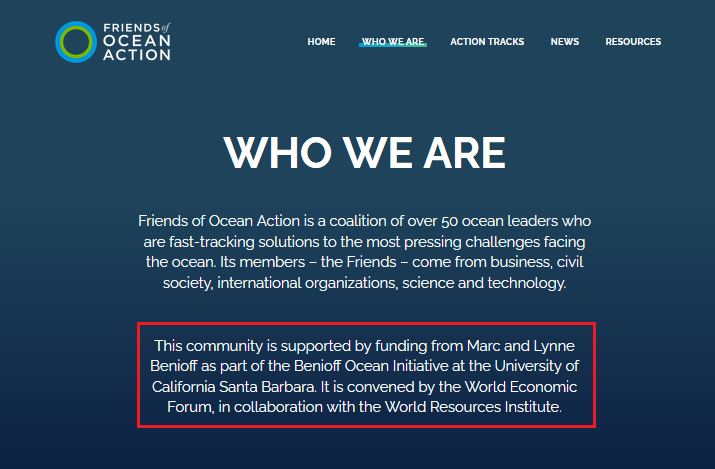
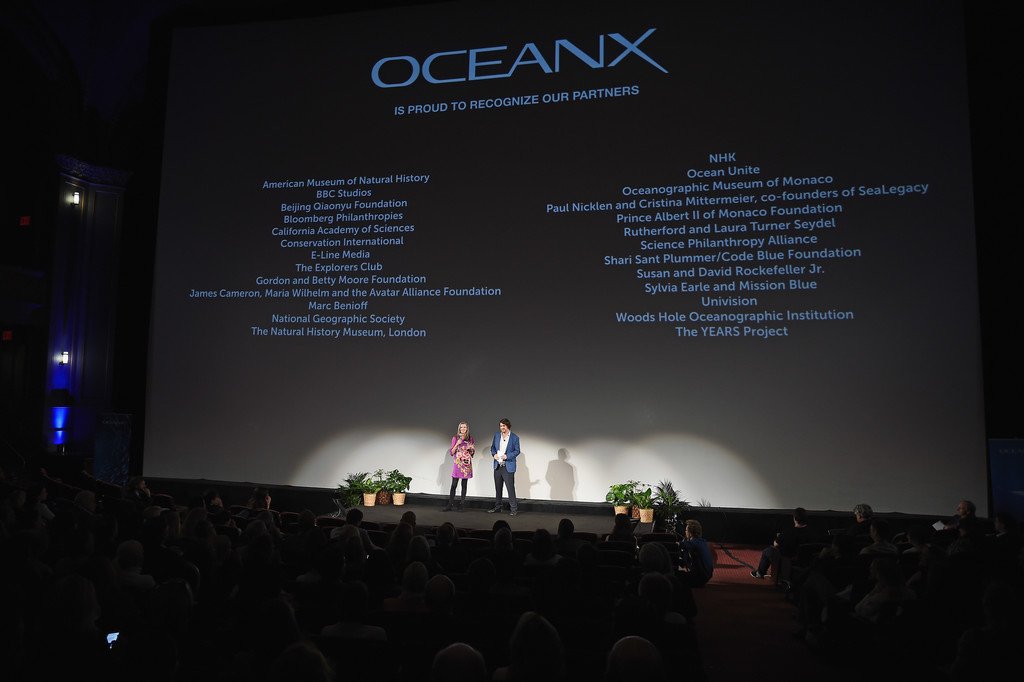























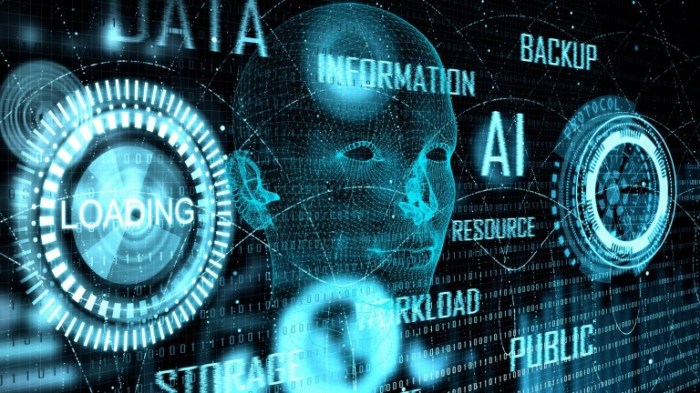


 He enthuses: “While it may not feel momentous to those of us experiencing a series of small but significant adjustments to life on a daily basis, it is not a minor change—the Fourth Industrial Revolution is a new chapter in human development, on a par with the first, second and third Industrial Revolutions, and once again driven by the increasing availability and interaction of a set of extraordinary technologies”. (5)
He enthuses: “While it may not feel momentous to those of us experiencing a series of small but significant adjustments to life on a daily basis, it is not a minor change—the Fourth Industrial Revolution is a new chapter in human development, on a par with the first, second and third Industrial Revolutions, and once again driven by the increasing availability and interaction of a set of extraordinary technologies”. (5)

 But this does not stop him presenting them in a positive light, as when he declares that “public crime is likely to decrease due to the convergence of sensors, cameras, AI and facial recognition software”. (27)
But this does not stop him presenting them in a positive light, as when he declares that “public crime is likely to decrease due to the convergence of sensors, cameras, AI and facial recognition software”. (27)


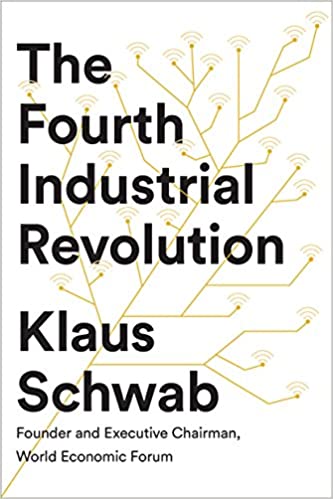 “This gives rise to an inequality that goes beyond the societal one described earlier. This ontological inequality will separate those who adapt from those who resist—the material winners and losers in all senses of the words. The winners may even benefit from some form of radical human improvement generated by certain segments of the fourth industrial revolution (such as genetic engineering) from which the losers will be deprived. This risks creating class conflicts and other clashes unlike anything we have seen before”. (51)
“This gives rise to an inequality that goes beyond the societal one described earlier. This ontological inequality will separate those who adapt from those who resist—the material winners and losers in all senses of the words. The winners may even benefit from some form of radical human improvement generated by certain segments of the fourth industrial revolution (such as genetic engineering) from which the losers will be deprived. This risks creating class conflicts and other clashes unlike anything we have seen before”. (51)
 One of these “narratives” whitewashes the reasons for which 4IR technology needs to be installed everywhere in the world as soon as possible.
One of these “narratives” whitewashes the reasons for which 4IR technology needs to be installed everywhere in the world as soon as possible.